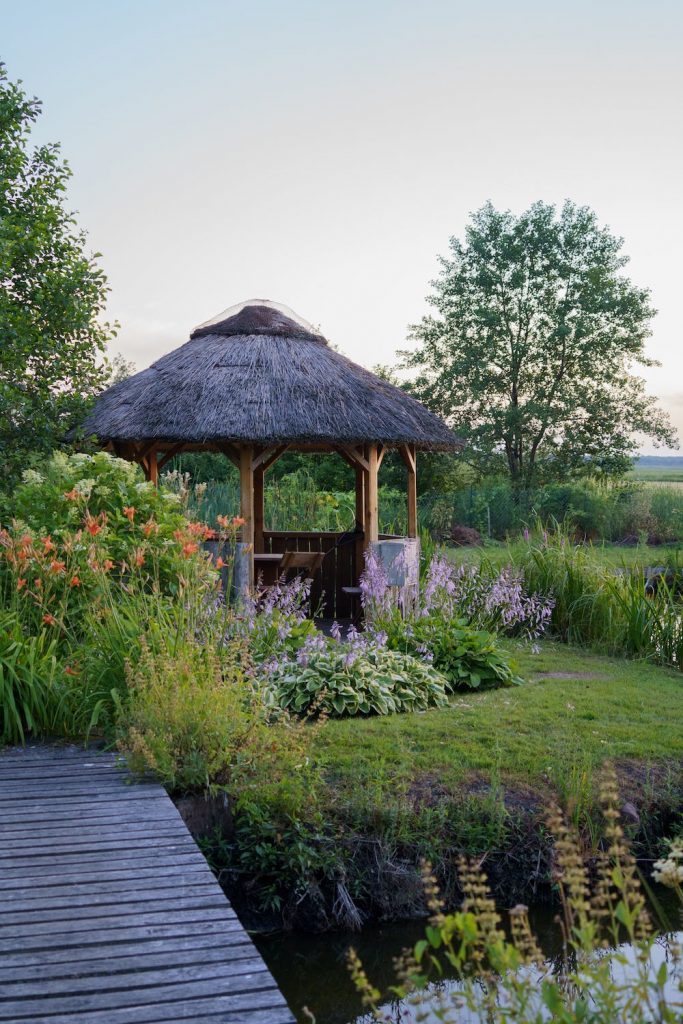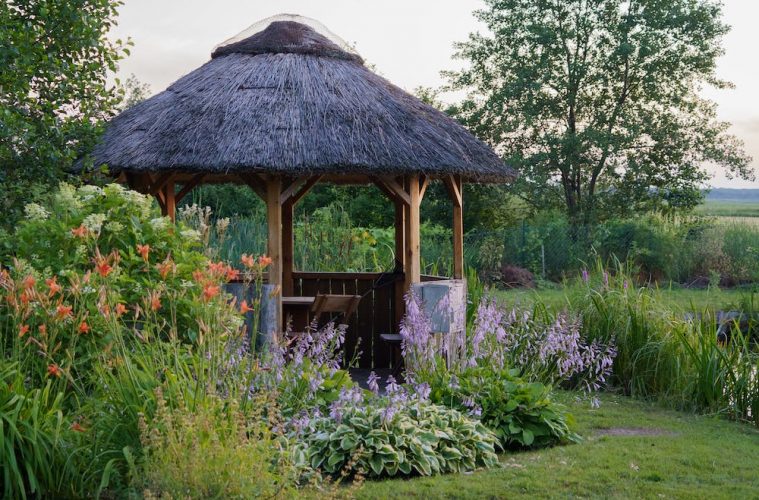Maximalism is generally used to describe an interior design technique. This term and trend, however, can also apply to gardens. The principles are the same, go big and bold with colour and texture. Here’s how to achieve this look for a splendid maximalist outdoor garden.
How to create a maximalist outdoor garden

Image credit: Pexels
For those who love collecting plants, this design style was made for you. The more plant types the better, with diversity being the key. A large garden bed crammed with plants flows like a wave and weaves a pattern like a colourful carpet.
Use every inch of space available for plants: use fencing and walls for climbers, add window boxes for trailing plants and place potted plants on stairs and blur the lines of garden rooms with more plants.
Garden beds
Layer plants in terms of height with tall shrubs, trees, conifers and palms forming the backbone. Usually placed toward the back of the bed; mid-level plants are medium-sized shrubs, perennials and tall annuals; and along the floor are the annuals, bulbs and ground-covering plants usually placed in front of the bed.
Choose plants that are more local to your area with similar light and water needs to reduce the maintenance of having a large number of plants. When the space looks cluttered, you may have gone too far – so know when to stop.
Before planting, make sure you know what size (height and width) the mature plants will get to so as to not cram, but control and get a good flow going. If you can, draw it on a piece of paper first before you dig the holes.
Lawns
A big expanse of the lawn will be crying out for decoration. Add statues, plants in large containers, groups of small containers, and even lawn games to make the most of areas without losing the functionality of the lawn space.
Trees
As with lawns, trees could always do with some decor in this design style. String lights through trees and add bird feeders. Not one mind you, add many bird feeders of different colours, shapes and sizes.
By using this planting and design technique you can create a garden of plenty. Each plant can be seen and appreciated. It is not an ‘abandoned’ look but rather a conscious array of different plants that form an abundance!
Featured image: Pexels

